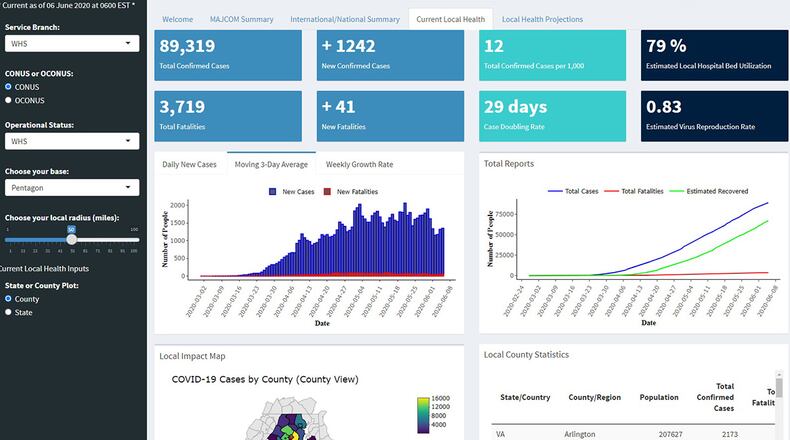“The objective was to provide Air Force leaders with where, when and how bad the next hot spot of COVID-19 outbreak will be,” said Deitschel. “Users can select any CONUS Air Force installation and an area between 25 to 100 miles from that installation. Results will include all of the counties within that radius. The dashboard is pulling in real-time data for hospitals, cases, and deaths. It provides charts, maps, and tables with the information of interest.”
“The CHAD project illustrates AFIT’s capability to apply data science and analytics to help address important operational and readiness issues,” said Dr. Todd Stewart, AFIT director and chancellor. “Our No. 1 priority at AFIT is to be relevant and responsive to the Air and Space Forces in all we do … teaching, research and consulting. The CHAD is a great example of putting that priority into practice”.
The “AFITeers” as the students became known, continue to improve CHAD by incorporating data and projections for OCONUS bases and MAJCOMs. CHAD now provides summaries for all installations and facilities across the Department of Defense, stateside and overseas. A recent major change includes an FOUO version that provides installations with current HPCON levels, gating criteria, and travel restrictions
The student’s work has been well received by Air Force leadership, and their contribution continues to inform policy decisions as part of the Air Force response to the COVID-19 crisis. As such, AF/A9 adopted continued development and support of the tool when the “AFITeers” graduated from AFIT and moved to their next assignments. The impact CHAD is having on senior level policy decisions cannot be understated.
“We have deep respect for the leadership at AFIT and AF/A9 who believed in us and our product and poured their resources into making this the product it is today,” said Alarcon. “Without them, this would not have made it to where it is.”
“We are extremely proud of these four recent AFIT graduates and of the faculty who advised them in developing the CHAD,” said Stewart. “This is an excellent example of AFIT’s capability to prepare its students to help the U.S. Air and Space Forces quickly respond to high-priority requirements, by offering innovative, practical solutions, to help our commanders and other leaders make better-informed decisions.
About the Author
